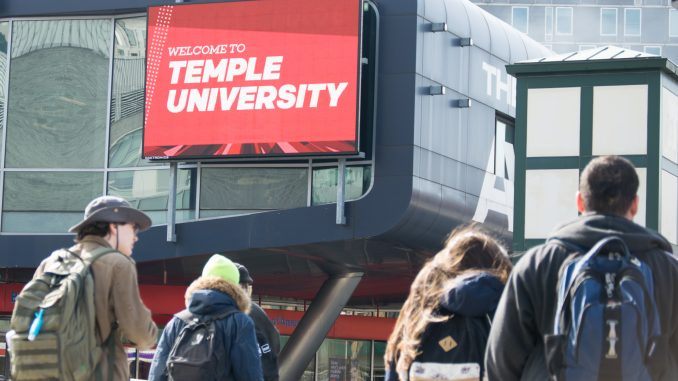
Temple’s marketing department is looking at ways to appeal to students earlier on in the college search process through the use of websites like BuzzFeed.
The university hopes to raise the interest and reputation of the school, and in turn raise the value of education for its students, said Emily Spitale, the associate vice president of strategic marketing and communications.
Temple’s marketing is shifting its focus to high school freshmen and sophomores, who are just beginning to consider college.
Temple’s budget for marketing in 2017 is nearly $10.8 million, slightly less than the previous year’s budget of nearly $11.8 million. This goes against the current trend among universities, most of which are increasing spending on student recruitment, Inside Higher Ed reported.
“The message to students earlier in high school is different,” Spitale said.
In 2015, Temple’s marketing department noticed that prospective students were increasingly engaging with sites like BuzzFeed. Temple reached out to BuzzFeed for potential collaboration, and the result was “13 Reasons You Should Live In Philly At Least Once In Your Life,” a piece of sponsored content aimed at attracting high school students to Philadelphia for college.
Sponsored content is an advertising technique used to reach people who are resistant to advertising. A company or institution will pay a website or other publication to put out something that resembles their normal content, but is aimed at attracting consumers.
“It’s been around forever,” said Joseph Glennon, an advertising professor. “Back in the ’20s and ’30s, Michelin tires started the Michelin Guide, which rated restaurants and hotels to encourage people to drive their cars. And if you drove your car, you used up tires.”
Glennon said Temple runs more local TV ads than other schools, but is otherwise on par with normal university advertising techniques. He said it makes sense that Temple is looking to aim its marketing at a younger audience.
“Most of our brand associations are made when we are very young,” Glennon added. “The sooner you can put yourself in front of an audience, you can have a longer conversation with them and you can also beat someone else to the punch.”
Jay Sinha, a marketing professor, raised the question of the effectiveness of Temple’s marketing strategy to his Consumer and Buyer Behavior class. He said that his class found a lot of places where the university could improve, like better use of social media and more personal connections with accepted students.
“The goal of a college’s marketing department should be to attract students and cater to the needs of current students,” Sinha said. “Based on what my students have told me, I would say we are performing at a sub-optimal level.”
“Everything we are doing to get our name out there raises our reputation and that raises the value of the degree,” Spitale said.
Jacob Garnjost can be reached at jacob.garnjost@temple.edu.


Be the first to comment